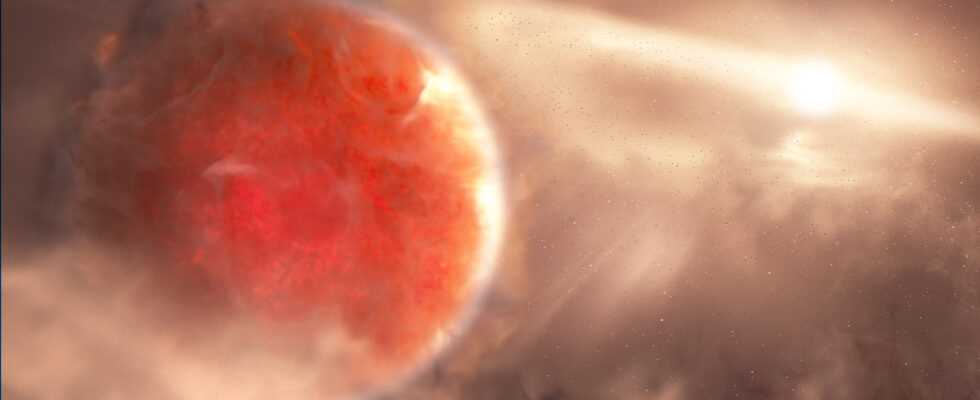Thanks to its longevity, the scientific teams were able to capture the process of the formation of AB Aurigae B, a exoplanet giant that “is born” before our eyes. But surprise, the latter does not follow the classic process, and would be the product of an instability of the protoplanetary disk. A novelty !
Measurements also continue from the ground.
young solar system
Our Solar System is no longer in its first orbits, at the height of its 4.6 billion years. But when he was young, everything was much more chaotic. A few million years after the formation of its star, the first protoplanets are formed within the discs of matter that surround the star in fusion…
A fascinating process that the Hubble telescope has observed since the beginning of its career in several systems in our corner of the galaxy. And with AB Aurigae, the orbital observatory is served. He’s been watching it for 13 years! This star located about 530 light years away is only 2 to 3 million years old, and the disk of matter around it is therefore just beginning to cool. A golden opportunity for observation, especially as it “faces” us in its entirety.
Scrached disk
In 13 years, the teams have had time to observe that at a very great distance from the star, an exoplanet could form differently than in the classic scheme known as accretion, where agglomerated matter increasingly attracts plus other blocks of material until a solid embryo is formed. This is how Jupiter was formed, for example.
But what Hubble observed (and which has been independently confirmed by a large number of terrestrial observations, in particular from the Japanese Subaru observatory) is a phenomenon which had not been noted until then. Very far from its star, about 13.5 billion kilometers away, the disc of matter which surrounds it would have collapsed on itself, which formed an area, a “pocket” within which is in the process of birth a giant planet, nine times more massive than Jupiter. Scientists believe that it is because of this enormous distance from its star: the disc would have cooled more quickly than the closer areas, precipitating its end. Is it a planet? It is precisely by observing it evolve over time that the team was able to respond positively.
Long term forecast
Two other smaller candidate exoplanets and for the moment unconfirmed would be forming around the same star, still 4 to 6 times farther from AB Aurigae… We will undoubtedly know more in the years or decades to come! Indeed, given the distances involved, it takes time to clearly see what telescopes see, just as it takes to definitively form a planet.
In 13 years, scientists have seen the star evolve and have been able to study its orbit. But it is also an advantage because large ground units equipped with coronagraphs can mask the glow of the star and capture the famous disc of evolving matter. The teams point out, in their scientific article published in Nature, the opportunity that Hubble represents for this type of measurement at regular intervals, and instruments that do not change for decades. Until the next ones take over?
Source : hubblesite

13